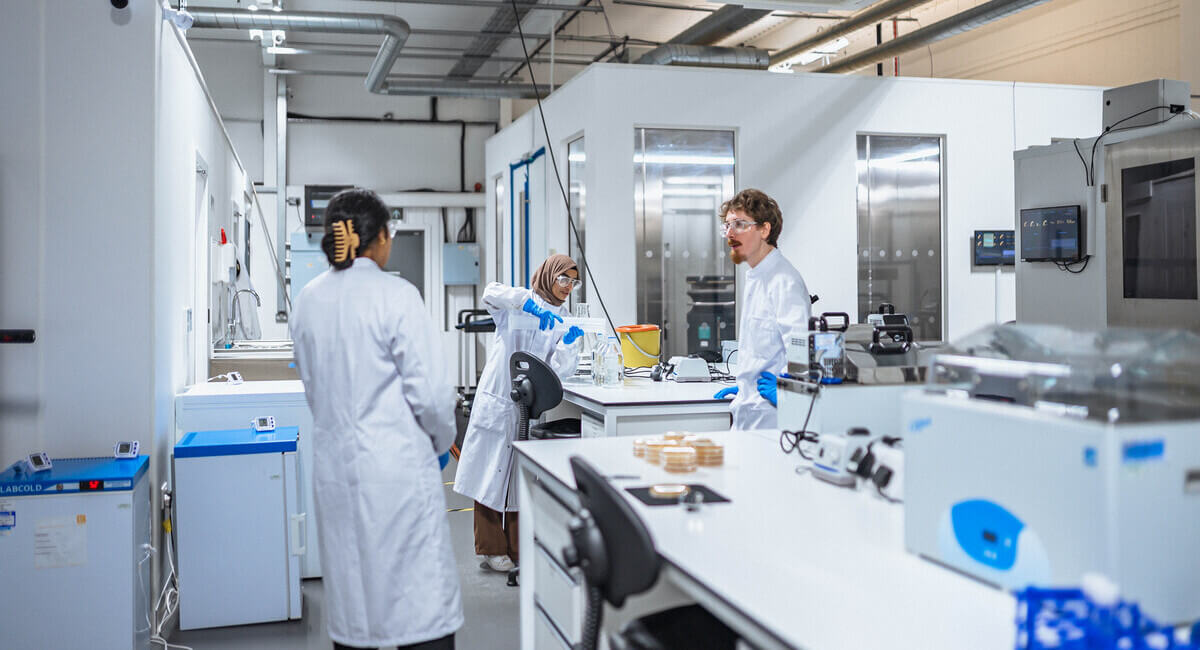Manual Disinfection: Everything You Need to Know
Article Summary
Manual disinfection is essential for heat-sensitive reusable medical devices that can’t undergo sterilisation. Breaking down when, why, and how manual disinfection is used, including regulatory standards, Spalding classification, and critical process controls that medtech leaders must know to stay compliant and ensure patient safety.Article Contents
What is Manual Disinfection and Why is it Important?
Manual disinfection is essential for ensuring the safety of reusable medical devices that cannot undergo traditional sterilisation. It is defined as the process of destroying pathogenic and other microorganisms by physical or chemical means. Unlike cleaning, which removes visible debris and soil, disinfection specifically targets microbial contaminants, serving as either an interim or final step in the medical device reprocessing, depending on device classification and risk.
Why do Some Medical Devices Require Manual Disinfection?
Manual disinfection is particularly important for heat-sensitive or moisture-intolerant devices such as flexible fibreoptic endoscopes, transoesophageal probes, or older rigid endoscopes. These instruments are often made from materials that would be damaged by high temperatures, making them unsuitable for sterilisation. Therefore, for such devices, chemical disinfectants must be used, especially liquid high-level disinfectants that are effective at lower temperatures.
Where Does Disinfection Fit in the Medical Device Reprocessing Cycle?
Medical device disinfection may act as:
- An interim step (after cleaning, before sterilisation) to reduce microbial load and make the device safe for handling.
- A terminal step when sterilisation is not feasible (common with semi-critical devices), making the device safe for patient contact.
The selection of disinfectant depends on its role in the cycle and the device classification.

Understanding Spalding Classification: What Disinfection Level is Needed?
The Spalding Classification system helps determine the level of disinfection based on device interaction with the body:
- Critical Medical Devices: These enter sterile body areas or the bloodstream. They must be sterile, not just disinfected. If sterilisation is not feasible due to material limitations, validated low-temperature sterilisation (e.g., hydrogen peroxide) must be used. Users should disassemble (if applicable), thoroughly clean, and sterilise these after each use.
- Semi-Critical Medical Devices: These come into contact with mucous membranes or non-intact skin but do not enter sterile areas. While mucosal surfaces resist bacterial spores, these devices must be free from all other viable microorganisms. If sterilisation is not possible, high-level disinfection (HLD) is required.
- Non-Critical Medical Devices: These only touch intact skin and do not penetrate it. A minimum of low-level disinfection is required, with visible cleanliness being essential. If visibly soiled (e.g., with blood), these must be cleaned and disinfected appropriately.
What are the Levels of Disinfection?
As defined in AAMI TIR-12, there are three disinfection levels:
- High-Level Disinfection (HLD): Kills all microorganisms except high numbers of bacterial spores.
- Intermediate-Level Disinfection: Kills vegetative bacteria, most viruses, fungi, and mycobacteria.
- Low-Level Disinfection: Effective against most vegetative bacteria, some fungi, and lipid-enveloped viruses.
How is Disinfection Efficacy Tested?
Disinfection efficacy testing assesses whether a disinfectant can eliminate organisms based on their inherent resistance to chemical agents. Organisms are categorised along a resistance spectrum, with Mycobacteria (e.g., Mycobacterium terrae) often used to validate HLD. Although M.terrae is not itself a bacterial spore, it sits in the middle-to-high end of the microbial resistance spectrum, hence if a disinfectant can achieve log 6 reduction of mycobacteria, it is considered potent enough for HLD.
Acceptance criteria include:
- Low-level disinfection: 6-log reduction of vegetative bacteria (e.g., P. aeruginosa, S. aureus, E. coli, Klebsiella).
- Intermediate-level disinfection: Same as above, plus 3-log reduction of a mycobacterium.
- High-level disinfection: 6-log reduction of a mycobacterium species (commonly Mycobacterium terrae).
Mycobacteria are used because of their high resistance, making them a reliable benchmark for HLD.
Key Considerations in Manual Disinfection
Manual disinfection is used when device materials are incompatible with heat or moisture, such as risk of warping, corrosion, or distortion. However, effectiveness hinges on strict process control:
- Use only FDA-cleared disinfectants. As of December 2023, 37 liquid chemical sterilants/HLDs are FDA-approved.
- Follow reuse life and dilution instructions precisely. Deviation can compromise efficacy.
- Consider medical device design: Complex channels, valves, and porous surfaces can hinder disinfectant penetration. Pre-treatment (e.g., irrigation or prolonged exposure) may be necessary.
- Control process variables: temperature, contact time, pH, water quality, light exposure, and evaporative losses.
- Evaluate toxicity and residue: Some disinfectants leave behind cytotoxic residues, especially with repeated use, making post-disinfection rinsing critical.
Get It Done, With Certainty.
Contact us about your testing requirements, we aim to respond the same day.
Get resources & industry updates direct to your inbox
We’ll email you 1-2 times a week at the maximum and never share your information


